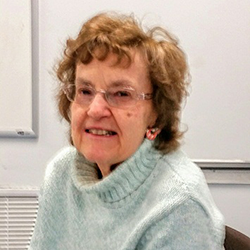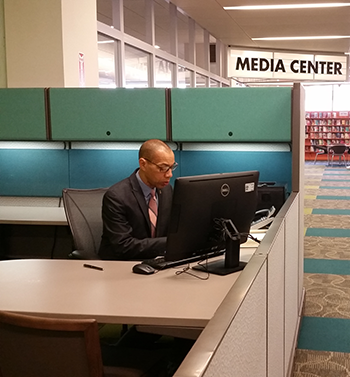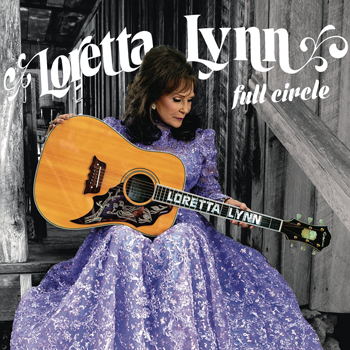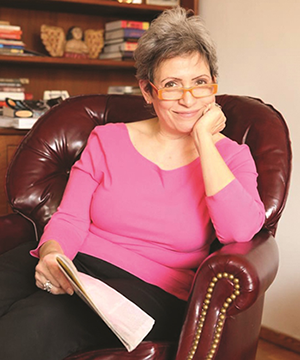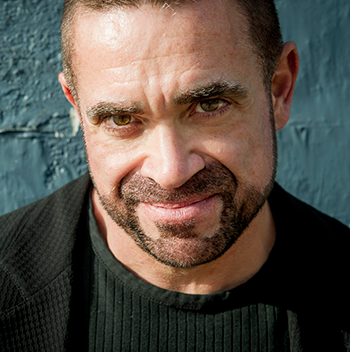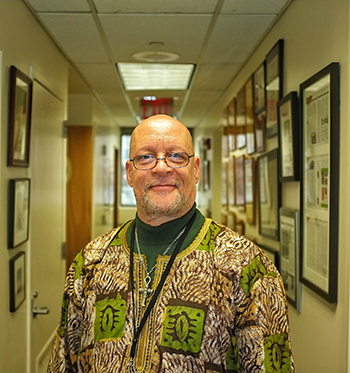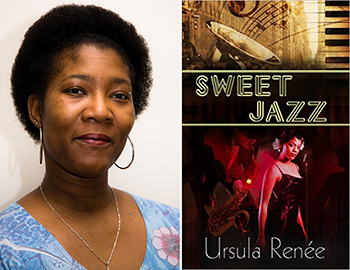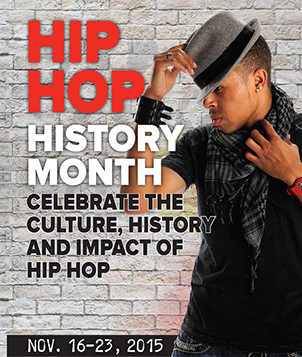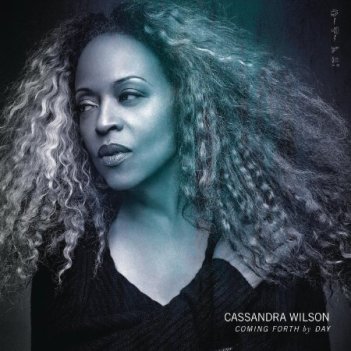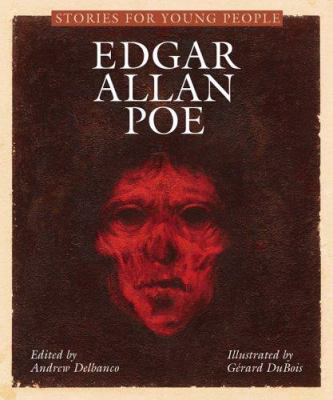It’s National Volunteer Week 2016, and we want to celebrate the important role of volunteers at Queens Library!
All this week, we will share stories of our volunteers on our blog. Thank you to them, and to every Queens Library volunteer, for their service!
Mary Ann Grassl serves as an English for Speakers of Other Languages (ESOL) Tutor at the Central Library Adult Learning Center (Central ALC), where she conducts an English Conversation Group with Intermediate-level students every week.
Born in Manhattan, Mary Ann moved to Queens in her 20s, and has been retired from her career as a social worker since 1999. Her volunteer career began at the Queensboro Council of Social Welfare, where she served in hospitals and clinics. Mary Ann enjoyed English as a subject in college (it was her secondary major), and she began volunteering with the Central Library Adult Learning Program over 10 years ago.
“Ms. Grassl is a dedicated person who is also committed to helping her students improve their spoken English and have their voices be heard,” says Kenneth M. Tabano, Manager of Central ALC. “Her group discusses relevant topics that everyone can take part in, and every student leaves each session having learned from each other. Rain or shine, she is there for her students.”
Mary Ann says that she loves volunteering with us, and feels that her adult students are so willing and eager to learn. Even when they aren’t initially receptive, she is always determined to help them find a way. Either way, her students are really delightful!
“She has bonded well with her many students over the years, as well as the staff here at Central ALC,” says Tabano. “We look forward to having Mary Ann as part of our team for as long as she is willing to be here.”
Our thanks to Mary Ann for teaching and encouraging others!
Thank you to everyone who joined us for our Twitter Q&A session with Dennis Walcott on April 6!
Our new President and CEO answered questions about quiet at the library, the path to 7-day service, which book he's currently reading, and more.
In case you missed it, you can read his answers in our Storify collection of tweets.
Tags
Looking for new music? Look no further than your local Queens Library!
Every month, our expert staff will bring you the best of what's new in our physical and digital collections.
Check out our music recommendations for April 2016!
Loretta Lynn, Full Circle
You probably know Loretta Lynn best as the “coal miner’s daughter.” She’s been recording country music for 60 years now and Full Circle is her 40th album to make the Billboard Country Top 10. As the title suggests, Lynn revisits some of her earliest songs while offering new ones and even singing duets with Willie Nelson and Elvis Costello. She’s won more awards and honors than can easily be counted and Full Circle will certainly add some more. You can stream the whole album on Freegal.
Bill Frisell, When You Wish Upon a Star
Bill Frisell is one of America’s foremost guitarists. He is best known for jazz, but has also written and recorded folk, classical, and country music. His new album is a sentimental exploration about how the music we hear in movies and TV helps us to form a relationship with what we are watching. Songs from movie classics like Breakfast at Tiffany's and The Godfather are mixed with music from TV shows like Bonanza; they are all performed in Frisell’s unique style, but you’ll have no problem recognizing them. Hear it for yourself on Freegal.
Macklemore & Ryan Lewis, This Unruly Mess I’ve Made
Macklemore is a rapper from Seattle and Ryan Lewis is his producer. This Unruly Mess I’ve Made is the second album from their collaboration. Judging by the critics’ response, the album lives up to its title. Macklemore is ruffling a few feathers with his confrontational style, perhaps alienating him from the fans that preferred the more mainstream tracks from their previous CD The Heist. The first video from the album is for the song “Kevin” featuring Leon Bridges, and you can watch it here.
3 Doors Down, Us and the Night
3 Doors Down had a post-grunge pop hit in 2000 with “Kryptonite,” which has gone on to become their signature song. Since then, the band has released five albums and has had as many changes to their lineup. Still, they sell millions of records and sell out large venues, so the changes must have worked. Their latest CD doesn’t veer too far from their grunge-lite formula—why fix it if it isn’t broken? Watch the video for the song “In the Dark.”
Iggy Pop, Post Pop Depression
Iggy Pop is a living legend of the American punk scene. His band the Stooges were playing in the style that came to be known as punk 10 years before it got the name. His antics on stage and off are mythic. His solo career was practically mainstream by comparison, but he was always the wild man of rock. His latest CD hits on all of the usual themes of sex and death and shows that, despite his age, he isn’t going down without a fight. Listen to the first single, “Gardenia.”
 BJ the Chicago Kid, In My Mind
BJ the Chicago Kid, In My Mind
Brian James Sledge, aka BJ the Chicago Kid, is a performer in the school of classic Chicago soul. He is soft spoken but not shy, and some of his songs could make teenagers blush. Tenderness toward women, not aggression, is the key and every one of the tracks on his debut In My Mind could pass as a love letter. He could best be compared to Smokey Robinson, but his tribute song to Marvin Gaye, “Turnin’ Me Up,” is a clear hit. Watch the video for it here.
Bonnie Raitt, Dig in Deep
Bonnie Raitt is a blues and roots rock singer as well as an accomplished slide guitar player. She struggled in her career until her commercial break-out in the early 1990s, most memorably for the song “Something to Talk About.” She’s been a staple of NPR and commercial radio ever since. Her 17th studio album, Dig in Deep, continues her streak of Top 40 hits. Listen to her funky cover of the INXS hit “Need You Tonight.”
Wolfmother, Victorious
Wolfmother is an Australian hard rock band that has been compared to Led Zeppelin and Black Sabbath. They’ve been recording and touring for ten years, but have yet to see any mainstream success outside of Australia. They would certainly appeal to American fans of psychedelic rock and heavy metal. Though some have complained that the new album Victorious is more like lead singer Andrew Stockdale’s solo project, the sound remains the same. Watch the video for the title track.
Jaheim, Struggle Love
Jaheim is an R&B singer and former rapper from New Jersey who has been recording since 2000. He had an early hit with the song “Put That Woman First” and his album Ghetto Classics went straight to number one in 2006. Ten years later, Jaheim has changed labels and gone a bit old school with his new album, Struggle Love. The title refers to his nostalgia for the days before fame, when everything was a struggle. There are horns, handclaps, and harmonies galore to get you in the mood. Listen to the title track.
Newsboys, Love Riot
Newsboys are a contemporary Christian pop band from Australia that has been on the scene since 1985. Like Menudo, they have changed personnel often and had 3 different lead singers, but never changed the name of the group. No matter—the fans still flock to the shows and their records make the charts and win awards. They’ve even won a new generation of fans for their work with the Veggie Tales video series. Their 18th album is Love Riot, and you can stream it on Freegal.
April is National Poetry Month, and we’re honored to share a poem, “Cornrows,” from the Queens Poet Laureate, Maria Lisella.
Are you an aspiring poet? Queens Library would like to give you the opportunity to share your verses with the world! Learn more here.
Cornrows
by Maria Lisella
Cheryl’s cornrows are
a maze of braids that crisscross
her round head topping
her dark, Trinidadian neck.
Her mother jelly-coats
her coffee-colored fingers to move
rapid and sure through nappy, crinkled hair.
She pulls one rope of hair
over the other, over the other,
over the other, until
the braids are locked down tight
with barrettes, ribbons, and bows.
Around the corner at Jean's Beauty Parlor
white women plop into wide leather chairs
as metallic chemicals crimp and whip
their soft hair into prim tootsie roll curls.
Across the street, Sylvia’s is crammed
arm to shiny bronze arm with Black women
pressing their hair — make it straight, straight,
straight, shiny, smooth as seals — take the nap out.
Cheryl and I watch Angela Davis,
who never lived in Queens,
the land of smooth and straight,
cry out of the TV.
She raises her fist past a brazen halo
of naturally kinky hair —
letting her ‘fro fly loud and free,
as if her hair said, "I will not hide,
I am trouble, see me now."
Cheryl's cornrows, a puzzle of braids
locked down tight, tight, tight.
I touch my smooth hair,
a single rope down my spine
wishing all the while
best friends could look more alike.
We’re very excited for our upcoming Culture Connection concert on Saturday, March 19, when piano virtuoso Anthony de Mare will perform works from his groundbreaking new CD, Liaisons: Re-Imagining Sondheim from the Piano.
Liaisons, a landmark eight-year project created and co-produced by de Mare, has brought together many of today’s best composers to pay tribute to and adapt the work of Stephen Sondheim and illustrate his genius as one of the greatest composers of the 20th (and 21st) century.
Praised by The New York Times for his “muscularly virtuosic, remarkably uninhibited performance [and] impressive talents,” Mr. de Mare’s professional career over the past 30 years has spanned live performances on five continents, nearly 20 recordings, and over 60 commissioned works, including the 36 compositions in the Liaisons Project. He has been referred to as one of the leading promoters of contemporary music, and pioneered the “speaking/singing” pianist genre by commissioning a variety of composers to create specific theatrical pieces that he would perform solo at the piano.
Mr. de Mare, who currently serves as Professor of Piano at the Manhattan School of Music and New York University, was kind enough to answer some questions for us about the Liaisons Project and his musical background in advance of his performance at Queens Library.
What role, if any, did libraries play in developing your love of music and your decision to become a professional musician?
Since music, theater, and dance were the background to my earliest years, I often went to the local library in East Rochester, NY, where I’m from. At the time, I was quite fascinated by their collection of classical, Broadway, and film score LPs. I used to spend hours flipping through them, listening to many of them there at the library and then often signing them out to bring home. I believe this really added to my motivation to explore all kinds of music as I began embarking on my studies in piano and dance and my involvement in theater programs.
What inspired you to create the Liaisons Project? Can you tell us why the work of Stephen Sondheim is so perfect for this project?
My love for Stephen Sondheim’s work dates back to my childhood, having discovered such shows as A Little Night Music, Company, Follies, and Pacific Overtures early on…which led to an obsessive immersion into his work, especially each time one of his new shows appeared on the theatre scene. I had always wondered what his amazing songs would sound like transcribed as legitimate piano works, much in the same vein as what pianists like Earl Wild had accomplished with Gershwin’s songs, and what Art Tatum did for so many of his contemporaries. This tradition goes back as far as Franz Liszt, but no one had ever done anything like this for the piano with Sondheim’s work in the past 30-40 years, so I thought it was about time.
In the late 1980s, I was invited to create a transcription of one of his songs (“Children and Art” from Sunday in the Park with George) to perform at a summer music festival, and from there I decided I would like to possibly create about 5-6 more of these transcriptions. My performing and teaching career started to take off and got in the way of focusing on a project like that, so I had to shelve the idea for a while…actually a long while. Several composer friends and colleagues kept asking me throughout the 1990s (and into the new century) when I was planning to finally do it. Then in 2006, my good friend, the Pulitzer Prize-winning composer Paul Moravec, encouraged me to seriously pursue this. My idea then was to cast the net wide to a variety of composers from multiple genres (contemporary classical, jazz, theater, film, opera, indie, pop, etc.) to create their own settings or “re-imaginings” of a favorite Sondheim song. With the help of a very talented and dedicated fundraising producer named Rachel Colbert, the project was set afoot.
How did you choose such diverse composers to reinterpret Sondheim’s songs?
There were several composers that I had worked with over the years whom I invited into the project. It was originally going to be about 20-25 works, but the roster kept expanding as the composer genres expanded. Also, Steve [Sondheim] would suggest more composers along the way that seemed perfect for the project and it gradually climbed up to 36—a nice round number—and this provided many options for presenters and possibilities for flexible programming. I wanted to be sure that each composer involved felt a true “connection” to Mr. Sondheim’s work.
Was it difficult for you and the other composers to take Sondheim’s more complex songs and develop them for just one instrument?
The word “re-imagining” is key to this project. I presented each composer with some parameters when they started—they were free to choose any song they felt connected to, and they were asked to retain the original melodic material of the song and most of his original harmonies. They were free to play with the structure, which is where much of the re-imagining seems to have originated for many of them. I requested that they not “deconstruct” the material, although a few actually did.
Since Sondheim’s original musical material in each song is expanded by lyrics and narrative, the challenge for many of the composers was to capture and encapsulate the essence of the lyrics, as well as the mood, ambience, and core of the song’s message, through an instrumental setting. Some composers found this a mighty “challenge”—many commented that the songs were already perfect. Therefore, some went the route of direct transcription for piano; some pieces became more fantasia-like. Each one again is unique to the composer’s individual style, active within the fabric of Sondheim’s original musical material.

Steve was quite intrigued by the idea from the start and very humbled by the fact that so many of these “A-list” composers (as he referred to them back then) were so interested in setting his melodies to the piano. He has been extremely generous throughout the entire eight-year trajectory of this project, offering suggestions, commissioners, constructive ideas, and a strong foundation of support. We would check in with him periodically to give him updates and he always provided a very enthusiastic “go ahead.” He seems to have deep respect for all the compositions in the collection and of course would never say which ones he likes better than others, but there are many that he has made some very distinctively positive comments about.
What can our patrons expect to hear at your concert on March 19?
They will hear a cross-section sampling of works from the collection—about 10-11 pieces. Some are straightforward interpretations of the songs, others have accompanying audio tracks. One of them even has some surprises coming from inside the piano. The re-imaginings for this program are derived from songs from Into the Woods, Anyone Can Whistle, Company, Sunday in the Park with George, Sweeney Todd, Follies, and A Little Night Music. The composers are William Bolcom, Andy Akiho, David Rakowski, Nico Muhly, Steve Reich, Thomas Newman, Fred Hersch, Wynton Marsalis, Duncan Sheik, Jake Heggie, and myself.
I’m sure this will be a difficult question, since there are so many to choose from, but what is your favorite Sondheim composition?
Oh, I love the entire canon of Steve’s work, I always have…therefore, there are just so many of his shows, along with dozens and dozens of songs, that I love so much. He has often said that Sunday in the Park with George is the show “closest to his heart” and I would say that has also always been one of my very favorites. And I would just add that for myself, the more I work and live with this material, the more I learn—it has become a body of work that I hold very close to my own heart, and it is an honor to be able to share it with the world now.
Photo of Anthony de Mare courtesy of Paolo Soriani. Photo of Stephen Sondheim circa 1970 via Wikipedia.
Andrew Jackson (Sekou Molefi Baako) has been Executive Director of the Langston Hughes Community Library and Cultural Center since 1980. He is retiring this year, and Queens Library will miss him, as will the countless people outside the Library whose lives he has enriched. The oldest of triplets, Andrew earned his B.S. at York College (CUNY) and his MLS at Queens College Graduate School of Library and Information Studies (CUNY). Andrew provides extensive outreach to schools, libraries, community organizations, cultural institutions, and correctional facilities, and mentors graduate students and young librarians across the country. We were honored to talk with him about his life and career and the legacy he leaves behind.
When and why did you decide to become a librarian?
I worked at Langston Hughes from 1980 to 1993 before I attended graduate school at Queens College to earn my Master’s in library science. My passion was studying black history, but there were no graduate programs in black history in New York City at that time. The only options were Cornell University upstate and Temple University in Philadelphia. Since I wasn't willing to leave Langston Hughes and the Number 7 train didn't stop at either of these campuses, I decided to get my MLS to learn more about our profession. I was hooked on Langston Hughes and its role in our community and borough. But more, I was hooked on what I was doing as director to provide such rich programs and services to Queens and the broader community.
You describe yourself as an “activist librarian.” What do you think the role of libraries and librarians is in generating positive social change?
I believe we inherit the responsibility to bring libraries to the people and design programs and services that fit their needs, wants, and even the needs and wants they don't know they have. More important, we also have a responsibility to introduce librarianship as a rewarding, enriching, and exciting career to consider, which means we should be extremely interactive with our customers and communities. We need to participate in Career Days, Read-Ins, Black History programs, Library Week, and so on to expose young people to the scope and breadth of what and who librarians are, how rewarding our jobs are, the value of public libraries, and the value of reading as a crucial life skill. And we need to make the library a central part of our community’s growth and development. We can't do that if we are not at the meetings and at the table to have a voice in community affairs and community issues. Librarians have to be visible in their community outside the library’s doors.
Thus, as an activist librarian, I've served on the boards of Queens Public Television and Elmhurst Hospital Center; on the York College President's Advisory Council and Queens College Arts Committee; and on the Louis Armstrong House Museum Advisory Board, the Queens Borough President's African American Heritage Planning Committee, and the Poet Laureate Administrative Committee and General Assembly. I've spoken to school classes and assembly programs, and at black history programs and career days for over 20 years. I'm well-known because I’ve been so visible in the broader community for so long. I know all of our elected officials by first name, and they all know Langston Hughes and know me by first name because of the relationship we've developed over the years.
I've also been an active member of the Black Caucus of the American Library Association since 1992, when I attended the first National Conference of African American Librarians, and a member of the Executive Board since 1996, chairing the Professional Development and Recruitment Committee and Affiliates Committees. I served as Vice President from 2002 to 2004 and as President from 2004 to 2006, and I have remained on the board as a past president to add a voice of experience and mentor new board members. I've mentored graduate students and new ALA members across the country as part of a responsibility passed down to me by my mentors. We have to mentor by example and be visible role models for the next generation.
When there are issues, local and national, librarians have to make their voices heard, and I've been able to do that through my work with the Black Caucus and in my position at Langston Hughes.
 What are some of your proudest moments in your 35 years as Executive Director of Langston Hughes Community Library?
What are some of your proudest moments in your 35 years as Executive Director of Langston Hughes Community Library?
It's hard to identify specific proudest moments, as there have been so many, but one is surely the opening of our facility in 1999. This was a long-time dream that I had a part in making real, with a voice in design and site selection. I hope to be around for the opening of our next building expansion as well.
My other proudest moments have to be what I’ve done to grow the visibility of Langston Hughes beyond Corona-East Elmhurst and Queens County and even internationally through my own visibility and activism. Creating the annual Langston Hughes Celebrations and Kwanzaa Celebrations and hosting them for the past 31 years has also been rewarding because they bring hundreds of people to Langston Hughes, including craft vendors, performers, and audience members from across the city and beyond.
I remember back in the day when I first started inviting all these people to our events, they would react as if I were inviting them out to Montauk Point because were not familiar with Queens and thought it was such a distance. Now that has all changed.
You co-edited a book, The 21st Century Black Librarian in America, about the unique issues and challenges for black librarians. Can you describe some of them and what steps you think libraries can take to support librarians of color?
It was clear from reading the essays submitted for this book project that racism still exists in the lives of black librarians across the board in America in this 21st century. By now one would hope this was no longer the case, but it is, as tragic as that is. Too often, librarians of color are not accepted as skilled professionals. They are second-guessed at the Reference Desk and in the boardroom by both colleagues and students, and not taken seriously when making recommendations and giving ideas. Although things are better than in the 20th century, these problems do exist today.
As racism is not solely a black-or-white issue but a diversity issue, I believe libraries and academic institutions must create an environment that makes all library staff members and volunteers feel welcomed and part of the team. The ALA Code of Ethics supports equal rights for all employees. Article Five reads, "We treat co-workers and other colleagues with respect, fairness, and good faith, and advocate conditions of employment that safeguard the rights and welfare of all employees of our institutions." That’s fine in print, but this has to be reinforced from the top down, from boards of trustees to library administration. Progress has been made for sure, but evidently much work still needs to be done for every workplace to be welcoming to all.
You were given five African names in recognition of your commitment to teaching black history and creating cultural programs for the people of Queens. That sounds fascinating! Can you describe how this happened and what your names mean?
I was giving a Kwanzaa presentation for a city agency back in 1993 and booked an African drumming ensemble to perform behind me as I presented the Nguzo Saba, the Seven Principles of Kwanzaa. Prior to their performance, the MC read my bio as part of my introduction, and the performers, who knew me well, mentioned that my American name no longer fit me because of my growth and transition culturally, and that this warranted my having an African name. I gave them the task of finding it. In April 1994, we hosted a 25th Langston Hughes Anniversary Celebration, and I booked this same ensemble to perform. They ended their performance with a full Naming Ceremony where the community and I were both presented with my new names at the same time. In the African tradition, the community has to agree with these names, not just the individual.
The names I was given were: Sekou, which means “warrior”; Molefi, “He keeps tradition”; and Baako, “first born” of the Jackson Triplets. Since then, I received a South African name from a South African choir in 1996: Bhekizizwe, “Take care of your people.” And a former student from Sierra Leone gave me the name Orbai, which means “teacher,” in 1999. I'm proud of these names as I think they accurately fit who and what I've become. I choose to use both names out of respect for my American and African ancestry, and I stand on the shoulders of both.
 As a teacher of Black Studies and cultural diversity, what “beginner” books would you recommend to someone who wants to know more about the experiences and history of people of color in America?
As a teacher of Black Studies and cultural diversity, what “beginner” books would you recommend to someone who wants to know more about the experiences and history of people of color in America?
That is not an easy question to answer because there are so many works to recommend, but I highly recommend that everyone read From Slavery to Freedom by John Hope Franklin. I also recommend the children’s book Heart and Soul by Kadir Nelson, a great work with incredible illustrations. I also highly recommend They Came Before Columbus: The African Presence in Ancient America by Dr. Ivan Van Sertima.
What advice do you have for the next Executive Director of Langston Hughes Community Library?
I've received numerous messages and questions about my retirement from Langston Hughes, and many express the concern that "no one can fill your shoes or follow in your footsteps.” I certainly appreciate the praise for what we have been able to accomplish during my 35 years at the helm of this institution, and I'm most pleased that the community appreciates my work and efforts over that period. However, I don't believe anyone is indispensable or can't be replaced with the right person. So my advice to my successor is simple. Don't try to follow in my footsteps; it took me 35 years to create them. Just be passionate about the work you will do here. Serve this community and borough from your heart. Create your own path and be yourself.
Photo of Andrew Jackson by Adolfo Steve Vazquez.
We’re excited for our upcoming book salon on Tuesday, January 19, “The Diversity of Romance,” where four talented romance authors—Ursula Renée, Jean C. Joachim, LaQuette, and Kate McMurray—will discuss the romance genre, their works, the need for diverse representations in romance, and what it’s like to be an author in today’s publishing industry.
Ursula Renée was kind enough to answer some questions for us before our January 19 event.
In the spirit of romance, we won't reveal all of Ursula's answers right away! Check back with us every day until January 19 to hear her thoughts.
You became a writer, artist, and photographer by going “from wishing to doing.” Can you talk more about how you found the courage to pursue your artistic goals?
I found the courage when I realized my fear of regret was greater than my fear of failure. I did not want to spend the rest of my life wishing I had done something. Instead, I wanted to enjoy the satisfaction of having at least tried.
You describe your novels as “multicultural historical romances.” How did you decide to write in that specific a genre?
Writing multicultural historical romances gives me the opportunity to explore how diverse groups interact during various time periods. As in the real world, not all the experiences in my books will be pleasant, but my characters will have opportunities to learn from each other and grow as a result.
You’re the past President of Romance Writers of America, New York City. How has that organization helped you and other writers?
Romance Writers of America creates programs that educate authors at every stage of their career. They also promote the romance genre to the general public. As a member of RWA/NYC, I am surrounded by other authors who understand the difficulties of putting words to paper, the pain of rejection, and the anxiety of putting a creation out there for the world to see. The members of my chapter are encouraging, willing to lend a shoulder to cry on, and offer words of encouragement and praise.
You and your fellow writers will talk to our audience about “diverse romance,” romantic fiction that includes people from different cultures, sexual orientations, and more. Can you talk about why supporting diverse romance is so important?
Some people shy away from books with a diverse cast of characters because they believe they cannot relate to them. Our society is composed of people from different backgrounds with various interests. Diverse romance not only reflects these differences, but it demonstrates that despite everything that sets people apart from each other, we have in common the desire to love and be loved.
Some people say romantic fiction is damaging because it creates unrealistic expectations. What is your response to that?
The characters in a romance novel must overcome internal and external conflicts to reach their happily-ever-after or happy-for-now. They are strong and persevere, despite the obstacles tossed in their paths. And their love interests respect them for their achievements and love them despite their flaws. Just like a reader of mystery novels does not expect to step out her door and suddenly become embroiled in a case that will have her involved in high-speed chases and shootouts, a reader of romance novels does not expect to be swept off her feet going about her everyday routine. However, it shouldn’t be unrealistic to expect respect, faithfulness, and love in a relationship.
What advice do you have for other aspiring novelists?
If you want to write a novel, then sit down and write it! Once you have finished writing, understand that you still have a long road ahead of you. No matter the direction you want to take your career, whether traditionally published or self-published, you will have to spend time honing your craft, editing your work, and marketing yourself.
Also, do not go into this expecting you will get rich overnight. The overnight successes are few. We write because we have stories inside us that have to come out.
In 2008, Ursula went from wishing to doing when she purchased a digital camera and registered for an online photography class. Armed with the knowledge she obtained from the class, she spent weekends touring New York with her camera until she finally captured the perfect shot of a sleeping red panda at the Bronx Zoo.
Excited by what she could do when she put her mind to it, Ursula decided to pursue other dreams, including drawing, sculpting, and writing. She dusted off the manuscript she completed years earlier and took advantage of the workshops and conferences offered by the Romance Writers of America, New York City. Thanks to the support and encouragement of the members of RWA/NYC, who would not let her give up after she received rejections, Ursula signed her first publishing contract for her historical romance, Sweet Jazz, which was released in 2014 by The Wild Rose Press, followed by A Bookie’s Odds a year later.
When she is not writing, Ursula enjoys drawing, photography, and stone carving. Ursula is a member of Romance Writers of America, Mystery Writers of America, and Sisters in Crime.
Legendary DJ, VJ, producer, and pioneer hip-hop personality "Uncle" Ralph McDaniels has joined Queens Library as its first Hip Hop Coordinator!
Mr. McDaniels will be working with Queens Library to build relationships within the hip hop community with an eye toward preserving that history and creating archival library collections. He will also be coordinating related programs and events of cultural interest to the Queens community, especially to attract young people into the library. Queens Library began an initiative to preserve and celebrate Queens' hip-hop heritage in 2014.
The announcement ushers in a week of special programs that celebrate the culture, history, and impact of hip hop. The schedule is below. All events are free.
"Hip hop is an important part of Queens' musical and cultural heritage. We need to preserve that history. At the same time, music is a living, breathing way to connect with the community and attract new library users. There's no one better to work with us on building library programs and collections based on hip hop than Ralph McDaniels. He is a media pioneer and was an eyewitness to its birth," said Bridget Quinn-Carey, Interim President and CEO of Queens Library.
Ralph McDaniels said, "The elements of hip hop include MC'ing, DJ'ing, writing/aerosol art, b-boying (dance), and knowledge. Until now, we haven't had the body of knowledge in any organized way. Queens Library can help move that forward locally, nationally, and internationally. The most successful hip-hop artists came from Queens. Hip hop grew out of Queens' jazz legacy. It belongs here."
Celebrate the culture, history, and impact of hip hop with us and our special guests!
Download the Hip Hop History Month brochure.
Monday, November 16, 5:00-6:00 p.m.
The History of FUBU with Keith Perrin
Queens Library at South Hollis, 204-01 Hollis Avenue
Keith Perrin, co-founder of FUBU (For Us, By Us), will discuss how FUBU became one of the most successful urban-clothing companies in history. He will share his story and tell how the company grew from a start-up created with a modest investment to a business worth more than $350 million today.
***
Thursday, November 19, 5:00-7:30 p.m.
Hip Hop Behind the Lens with Ken Harris, a.k.a. KENTHEPHOTOGRAPHER
Queens Library at Rochdale Village, 169-09 137 Avenue, Jamaica
Queens-born photographer Ken Harris, a.k.a. KENTHEPHOTOGRAPHER, will discuss pieces from his collection of photographs documenting significant events, celebrities, and everyday life. You never know who will stop by to sign autographs, take pictures, and give shout outs!
You can also be part of our Hip Hop History Show and Tell! Bring your stories, photos, posters, and other mementos, and the Queens Memory Team will digitize your best submissions for the library’s archive and give you a thumb drive of the scans.
***
Friday, November 20, 4:00-5:45 p.m.
Universal Zulu Nations presents “Breakin’ Session” with Floor Royalty Crew
Langston Hughes Community Library, 100-01 Northern Boulevard, Corona
Come out and learn the basic breakin’ moves from the early days of Hip Hop culture.
***
Saturday, November 21, 1:00-5:00 p.m.
Universal Zulu Nations presents La Conekta Family Day Celebration
Langston Hughes Community Library, 100-01 Northern Boulevard, Corona
Celebrate Hip Hop history and culture as we join together under the umbrella of peace, love, unity, and having fun! Enjoy a day of performances, music, dancing, live art, and many other fun activities for the family.
***
Monday, November 23, 4:00-5:00 p.m.
The Art of DJ’ing
Queens Library for Teens, 2002 Cornaga Avenue, Far Rockaway
Learn how DJs create successful careers, from the booth to the airwaves. A “Battle of the DJs” with special guests will follow.
Looking for new music? Look no further than your local Queens Library! Every month, our expert staff will bring you the best of what's new in our collection.
Check out these music recommendations for November!
Cassandra Wilson, Coming Forth by Day
Though she is often labeled a jazz singer, Cassandra Wilson is so much more. She is also a musician, songwriter, and producer who loves to infuse jazz with elements of country, folk, and blues. She’s been working hard since 1986, putting out almost 20 albums of her own and appearing on dozens of others. Her latest, Coming Forth by Day, reinvents the Billie Holiday songbook, breathing fresh life into old standards. You can stream the whole album on Freegal.
Shelby Lynne, I Can’t Imagine
Shelby Lynne is a genre-bending singer/songwriter who has gone from Dixie to California styling in her 13-album career. Her latest record finds her back in the South, adding some twang to her soul and some rock to her rhythm and blues. No matter the style, her pitch-perfect contralto is the perfect emotive tool for her songs from the heart. Listen to the title track.
Kelsea Ballerini, The First Time
Kelsea Ballerini is a country pop singer from Tennessee who grew up singing in church and school choirs. She left college to pursue a musical career and was quickly signed to a country label. Her first single “Love Me Like You Mean It” went to number one on the Billboard country music chart, a feat last achieved by Carrie Underwood in 2006. Her debut album The First Time can be heard in its entirety on Freegal.
Chris Cornell, Higher Truth
Chris Cornell was one of the founders of grunge with his group Soundgarden. They appealed to the heavy metal fans that weren’t quite into the punkier bands like Nirvana or Mudhoney. His career then went something like this: Soundgarden then solo, join Audioslave then solo, Soundgarden reunion tour and then back to solo. He has said that when life on the road gets too loud and crazy, he likes to step back and record quieter material. The solo albums may not sell millions, but they can be more rewarding and satisfying than head-banging. Try “Nearly Forgot My Broken Heart” and decide for yourself.
Alexis Spight, Dear Diary
As a PK (preacher’s kid), Alexis Spight grew up in church in Buffalo, New York. Though she sang in the choir for as long as she can remember, it wasn’t until she was cast on the BET talent show Sunday Best that she realized she could make a career of it. Her brand of urban contemporary gospel made her a popular contestant on that show. Her debut album went to number one on the Billboard gospel chart. Her new album, Dear Diary, is a bit more personal. Listen to the song “Drop That."
 Wilco, Star Wars
Wilco, Star Wars
You can be forgiven for not knowing that Wilco released their ninth studio album, Star Wars. It was a surprise free CD on their website, four years after their last album. Unlike the free U2 album that forced its way into everyone’s iTunes, people actually wanted this one and the critics have hailed it as a welcome return to form for the band. It is experimental without being weird and, like the kitten on the cover, very warm and fuzzy. This may not be the best entry point for newcomers, but fans should be jumping for joy. Check out the song “Magnetized."
Tony Succar, Unity: the Latin Tribute to Michael Jackson
Tony Succar is a Peruvian-American musician and the leader of the Unity Project. Unity seeks to celebrate the music of Michael Jackson with a Latin-orchestrated sound. It is a bold step that brings the Jackson hits to another level of intensity. Tony is helped by stars like Jon Secada, Tito Nieves, and Jean Rodriguez, who all add their unique sounds to the mix. If you are a fan of Michael Jackson but never really gave Latin music a try, this is a great gateway. You can watch some videos on the project’s YouTube channel.
Meek Mill, Dreams Worth More Than Money
Meek Mill is a hip-hop artist from Philadelphia. When he isn’t getting into fights with Cassidy and Drake, he puts out some incredible tracks. His latest album, Dreams Worth More Than Money, was supposed to be released last year, but his probation was revoked and the record label thought it best to wait until he was free and able to promote it. If Meek can manage to stay out of jail, he can pretty much write his own ticket, since the delayed album went to number one as soon as it was released. Listen to the lead single "All Eyes On You.”
Faith No More, Sol Invictus
Faith No More are an influential funk metal band that started in 1981 and influenced everyone from Nirvana to Slipknot. They started a ten-year hiatus in 1998 and then came back for a reunion tour that went so well they started to record new material. Sol Invictus is their first new album since 1997, and it stays true to their signature sound while also incorporating some goth and indie-rock vibes. This could be a new beginning for an old favorite. You can listen to all 10 tracks courtesy of Freegal.
Jason Derulo, Everything is 4
Jason Derulo is a singer and dancer from Florida who became a household name as a judge on So You Think You Can Dance?. You may also know his smash singles “Wiggle” and “Talk Dirty,” which were worldwide hits. His fourth album is appropriately titled Everything is 4 and the first single “Want to Want Me” was the most-added track to American Top 40 radio in history. He has won several R&B awards and is poised to win more. Watch the video for his latest single “Cheyenne."
Halloween is on its way, and we asked our librarians to share some favorite terrifying tales from books, movies, children’s literature and more!
Do you have a scary story you'd like to add? Contact us and we might add it to this gruesome list!
Silver darts swerving madly
hues of rainbows floating angelically
half cats gliding along the pebbled water roads little pink crabs scuttling along the sandy shore rows of spears along a sleek menacing predator looking for prey a mysterious giant (bubblegum) squid waiting in the deep dark shadows of the most perilous waters swerving, floating, gliding, scuttling, looking, waiting fish of the 7 oceans.
Silver darts swerving madly
hues of rainbows floating angelically
half cats gliding along the pebbled water roads little pink crabs scuttling along the sandy shore rows of spears along a sleek menacing predator looking for prey a mysterious giant (bubblegum) squid waiting in the deep dark shadows of the most perilous waters swerving, floating, gliding, scuttling, looking, waiting fish of the 7 oceans.
 “I manage the DVD collection at Central Library, and there is one movie we have that I find very scary—The Collector, with Terence Stamp and Samantha Eggar, based on the novel by John Fowles. There’s no bloodshed, no big teeth and no imaginary monsters; what’s terrifying about it is that it could easily happen in real life.” Marina Rudko, Librarian, Central Library
“I manage the DVD collection at Central Library, and there is one movie we have that I find very scary—The Collector, with Terence Stamp and Samantha Eggar, based on the novel by John Fowles. There’s no bloodshed, no big teeth and no imaginary monsters; what’s terrifying about it is that it could easily happen in real life.” Marina Rudko, Librarian, Central Library
“One of my favorites is Paul Galdone’s version of The Teeny-Tiny Woman. I love it because it’s for young kids and a little scary, but not enough to really frighten them. It’s also funny and has a surprise ending, and it’s great to read aloud. I love the illustrations in this version, too!” Mary Blieka, Children’s Librarian, Queens Library at Flushing
“Stephen King wrote two short stories, ‘The Raft’ and ‘The Mist,’ which both appear in his book Skeleton Crew. Both explore the horror of helplessness. In the first story, some teenagers are stuck in the middle of a lake, cut off from shore by something trying to kill them. In the second, a group of townspeople are trapped in a supermarket, surrounded by the mist—and what’s in it—and unable to venture out. I can’t imagine anything worse than being in a situation where there is no hope for escape.” Daniel Thom, Senior Librarian, Information Access Services, Central Library
“I have a great young-adult pick: Welcome to the Dark House by Laurie Stolarz. Imagine an ’80s slasher movie taking place on the set of The Real World, and you’ve got some great old-school horror with a reality show twist. For six contestants, it’s the chance of a lifetime: to meet and possibly be in their favorite director’s next horror movie. Shortly after settling in, the group starts experiencing strange things, including one member going missing, cryptic messages and bloodstains. But is it all part of the movie?” Rosemary Kiladitis, Children’s Librarian, Queens Library at Pomonok
“I recall reading Edgar Allan Poe’s The Masque of the Red Death when I was fifteen. It was a riveting read. It’s short and concise, with nightmarish imagery. The story is quite frightening because it mixes the vivid images of the splendor of the Prince’s court with the hideous specter of the Red Death. It examines the fear of illness and death, which even the most privileged people in the kingdom are at a loss to cope with. What a haunting story!” Daniel Zaleski, Senior Librarian, Programming and Outreach, Central Library
